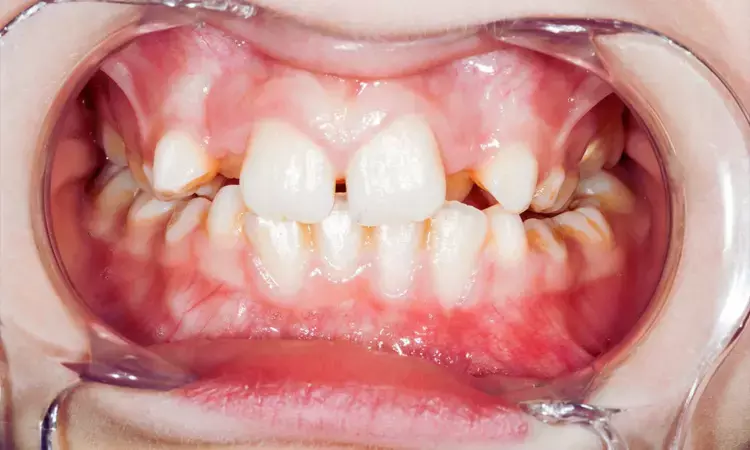- Home
- Medical news & Guidelines
- Anesthesiology
- Cardiology and CTVS
- Critical Care
- Dentistry
- Dermatology
- Diabetes and Endocrinology
- ENT
- Gastroenterology
- Medicine
- Nephrology
- Neurology
- Obstretics-Gynaecology
- Oncology
- Ophthalmology
- Orthopaedics
- Pediatrics-Neonatology
- Psychiatry
- Pulmonology
- Radiology
- Surgery
- Urology
- Laboratory Medicine
- Diet
- Nursing
- Paramedical
- Physiotherapy
- Health news
- Fact Check
- Bone Health Fact Check
- Brain Health Fact Check
- Cancer Related Fact Check
- Child Care Fact Check
- Dental and oral health fact check
- Diabetes and metabolic health fact check
- Diet and Nutrition Fact Check
- Eye and ENT Care Fact Check
- Fitness fact check
- Gut health fact check
- Heart health fact check
- Kidney health fact check
- Medical education fact check
- Men's health fact check
- Respiratory fact check
- Skin and hair care fact check
- Vaccine and Immunization fact check
- Women's health fact check
- AYUSH
- State News
- Andaman and Nicobar Islands
- Andhra Pradesh
- Arunachal Pradesh
- Assam
- Bihar
- Chandigarh
- Chattisgarh
- Dadra and Nagar Haveli
- Daman and Diu
- Delhi
- Goa
- Gujarat
- Haryana
- Himachal Pradesh
- Jammu & Kashmir
- Jharkhand
- Karnataka
- Kerala
- Ladakh
- Lakshadweep
- Madhya Pradesh
- Maharashtra
- Manipur
- Meghalaya
- Mizoram
- Nagaland
- Odisha
- Puducherry
- Punjab
- Rajasthan
- Sikkim
- Tamil Nadu
- Telangana
- Tripura
- Uttar Pradesh
- Uttrakhand
- West Bengal
- Medical Education
- Industry
Clinical Photograph Assessment Shows High Accuracy in Caries Detection: Study Finds

China: Researchers have found in a new study that visual assessment of clinical photographs for caries detection shows clinically acceptable accuracy compared to direct intraoral examination, with high specificity indicating strong reliability in identifying healthy tooth structures. The findings were published online in the Journal of Dentistry.
The researchers note that dental caries, though preventable, can lead to serious oral health issues if not detected early. Traditionally identified through visual exams, its diagnosis now faces challenges like clinic access and examiner subjectivity. With the rise of teledentistry, especially after COVID-19, clinical photography has gained prominence for remote diagnosis. It aids in caries detection, monitoring, and education, though more research is needed to validate its accuracy compared to conventional methods.
Against the above background, Jason Chi-Kit Ku, Faculty of Dentistry, The University of Hong Kong, Hong Kong, S.A.R., China, and colleagues assessed the accuracy of detecting dental caries through clinical photographs compared to traditional visual intraoral examination.
For this purpose, the researchers conducted a systematic review, registered in PROSPERO (CRD42024598814) and aligned with PRISMA-DTA guidelines, to assess the accuracy of clinical photography in detecting dental caries compared to visual intraoral examination. Accuracy measures such as sensitivity, specificity, diagnostic odds ratio (DOR), the area under the curve (AUC), and partial AUC (pAUC) were analyzed. Eighteen studies involving 1300 participants were included from PubMed, Web of Science, Scopus, and EMBASE. The risk of bias, assessed using the QUADAS-2 tool, was frequently observed across several domains.
The key findings were as follows:
- The pooled sensitivity and specificity for visual assessment of clinical photographs in detecting enamel caries were 0.74 and 0.95, respectively, with a diagnostic odds ratio (DOR) of 52.94 and an AUC of 0.813.
- For dentine caries, the pooled sensitivity was 0.81, and specificity was 0.98, with a DOR of 142.01 and an AUC of 0.935 (partial AUC: 0.857).
- For any caries depth, the pooled sensitivity was 0.81 and specificity was 0.99, with a DOR of 245.04 and an AUC of 0.957 (partial AUC: 0.902).
- Subgroup analysis indicated that factors such as caries depth, dentition type (primary vs. permanent; p = 0.584 for dentine caries, p = 0.923 for any caries depth), imaging technology (smartphone camera vs. intraoral camera; p = 0.993), and photographer (dental professional vs. layperson; p = 0.466) did not significantly affect diagnostic performance.
"The findings showed that the visual assessment of clinical photographs shows clinically acceptable accuracy for detecting dental caries when compared with visual clinical intraoral examination. The consistently high specificity across diagnostic thresholds highlights its reliability in correctly identifying sound tooth structures," the authors concluded.
Reference:
Ku, J. C. K., Mao, K., Wang, F., Carreiro, A. D. F. P., Lam, W. Y. H., & Yu, O. Y. (2025). Accuracy of clinical photography for the detection of dental caries: A systematic review and meta-analysis. Journal of Dentistry, 157, 105737. https://doi.org/10.1016/j.jdent.2025.105737
Dr Kamal Kant Kohli-MBBS, DTCD- a chest specialist with more than 30 years of practice and a flair for writing clinical articles, Dr Kamal Kant Kohli joined Medical Dialogues as a Chief Editor of Medical News. Besides writing articles, as an editor, he proofreads and verifies all the medical content published on Medical Dialogues including those coming from journals, studies,medical conferences,guidelines etc. Email: drkohli@medicaldialogues.in. Contact no. 011-43720751


